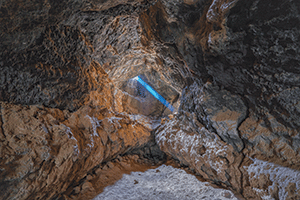

Barely half of mining organisations describe their progress towards deploying a digital/technology transformation strategy as ‘Advanced’, while simultaneously and universally designating such transformation as “critical to survival”, new research shows. At 53%, the proportion of mining organisations describing progress as ‘Advanced’ is up just 6% from 2021’s figure, despite them dedicating an average of 9% global annual revenue to digital transformation and innovation.
The survey’s respondents – all senior IT and technology decision makers in the global mining and metals sector – also described the extent of numerous obstacles hindering the adoption of digital transformation technologies, including:
• Cybersecurity concerns (referenced by 44% of respondents).
• Lack of vision into the potential for digital solutions (41% of respondents, up from 31% in 2021).
• Lack of market knowledge in new solutions (also 41% of respondents, up from 33% in 2021).
• Slow decision-making by senior management (cited by 31% of respondents).
• Perhaps as a result of these and other obstacles, another finding showed an average of just 60% of the budgets allocated to digital/technology transformation ends up being spent on it.
The research was commissioned by Axora, the technology marketplace for the metals and mining sector. Axora’s resulting report – Innovation Forecast 2022/23: Digital Transformation in Mining – is available to download at https://www.axora.com/innovation-forecast/metals-and-mining/ (or via the short link: https://www.securitysa.com/*axora1).
Ritz Steytler, CEO of Axora, said: “Without control of the price received for their product, or of many of the costs associated with production, many of mining’s digital transformation initiatives seem to be linked by the idea of improving control – or at worst, ‘management’ – of the factors they can influence: certain costs, safety, productivity, efficiency, people. Such an analysis certainly makes sense, given our respondents’ overwhelming agreement that the success of their digital transformation efforts is critical to the survival of their business.
Yet despite that ‘survival’ imperative, respondents made it clear that they are having to deal with a variety of obstacles – including obstacles that one might have thought would have been successfully addressed or eliminated by now,” he added.
Joe Carr, director of innovation at Axora, said: “Many of the obstacles to digital transformation cited by our respondents are rooted in the skills gap; it’s well-known that the entire sector finds it difficult to attract and retain the technology talent it needs. This is, then, an awkward time for the mining companies: the need to digitally transform is only going to become more urgent in order, as our respondents say, for mining businesses to thrive and survive.”
Where to start
Concerning cybersecurity, Carr adds: “First, most mining companies lack the in-house skills onsite to operate complex technology. Mining students are now only learning about artificial intelligence, cloud-based platforms, and machine learning. This makes it extremely difficult to find a candidate with the technical skills and essential mining experience required for these roles.
“Companies are worried about sensitive information getting out. For example, when you look at cloud-based platforms, there are questions about accessibility and if their operational data is at risk. This hesitancy leads to digital projects taking ages to execute – often held up in the procurement stage. The real problem is that people don’t know where to begin.”
Increasing productivity remains the top driver for the many technology deployments that are taking place; productivity was also the most common benefit seen from deploying new technologies (66% of respondents). Productivity improvements are being achieved through a wide variety of technologies: from autonomous vehicle projects, to the application of machine learning/AI to problems, to reducing accidents, to improving training.
Other statistics identified by the research include:
• The proportion of respondents saying that “the cost of a technology investment is more important than the value it delivers” rose from 24% in 2021 to 34% in 2022.
• Furthermore, 82% of respondents said that tensions between corporate and site-level teams were hindering innovation progress.
• Respondents identifying the Industrial Internet of Things (IIoT) as a technology that will provide the biggest growth opportunity in the coming year leapt from 37% to 51%; robotics fell from 45% to 27%

© Technews Publishing (Pty) Ltd. | All Rights Reserved.